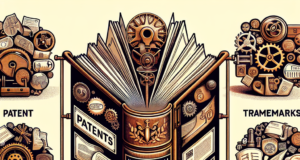
Teleflex
acted as the plaintiff and KSR as the defendant in the 2007 case involving
patent infringement. Teleflex believed KSR’s use of a vehicle control pedal
connected to an electronic throttle control was an infringement on a patent
held by the plaintiff. The District Court ruled in favor of the defendant
claiming the use was obvious, but the Federal Court reversed the decision. The
case went to the Supreme Court, which in turn reversed the decision back to the
District Court’s decision and ruled in favor of the defendant.
Case Description
The defendant combined an adjustable control pedal
to an electronic throttle control in automobiles. The plaintiff claimed this
was infringing on a patent claim they owned. The defense’s argument was a
simple argument that is used in many patent infringement cases. They argued the
combining of the two elements in the case was an obvious adjustment made to the
existing patent. The obviousness of the combination would have been realized by
anyone familiar with the art. The plaintiff did not feel there was a level of
obviousness attached to the combination performed by the defendant.
Ruling
The Supreme Court was clear in its ruling that the
combining of the two elements in the automobile was obvious. The Supreme Court
noted that the Federal Court was incorrect in determining that combining the
two elements discussed in the case were not obvious and someone familiar and
skilled in the art would not naturally combine the pedal and the electronic
throttle. The Supreme Court went as far as to say the combination was common
sense. The KSR decision is now used in almost 60% of similar cases. Many feel
there are too many instances that are declared obvious but obviousness will
only apply to those who are familiar with the art discussed in each individual
case.




























